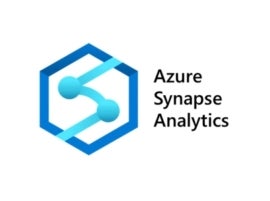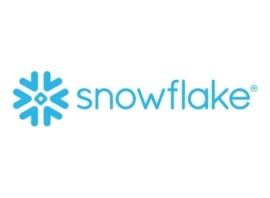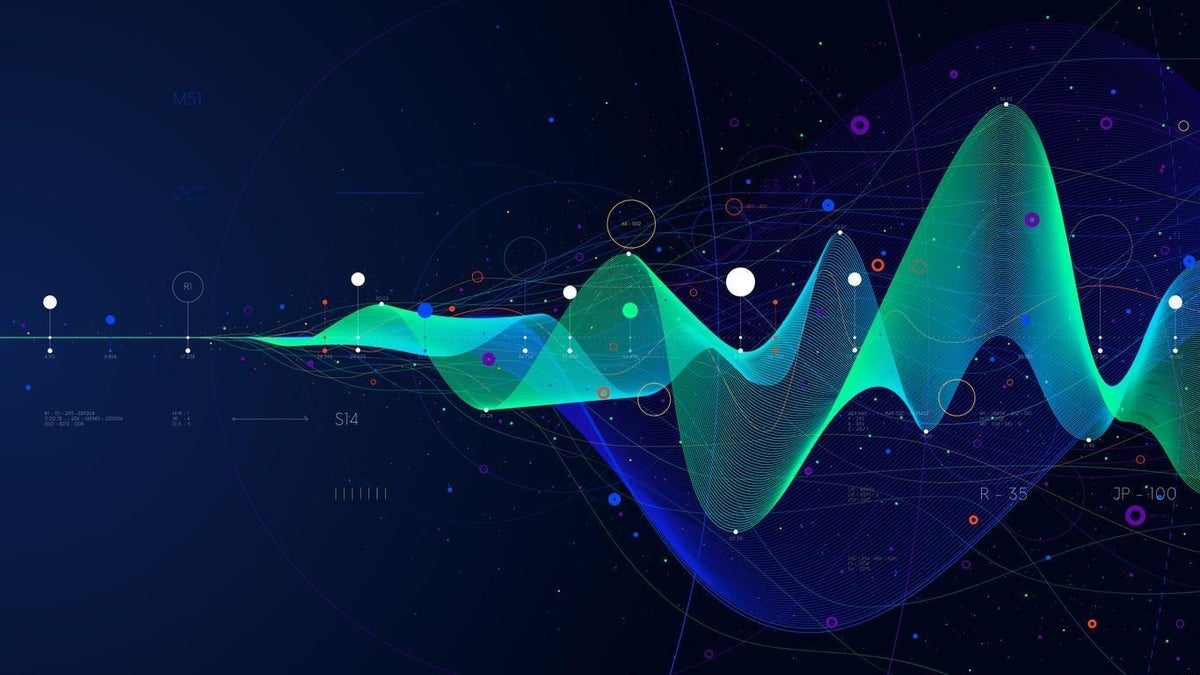Azure Synapse Analytics and Snowflake are two commonly recommended ETL tools for businesses that need to process large amounts of data. Choosing between the two will depend on the unique strengths of these services and your company’s needs. These are the key differences between Synapse and Snowflake, including their features and where they excel.
Jump to:
- What is Azure Synapse Analytics?
- What is Snowflake?
- Azure Synapse Analytics vs. Snowflake: Comparison table
- Azure Synapse Analytics and Snowflake pricing
- Feature comparison: Azure Synapse Analytics vs. Snowflake
- Azure Synapse Analytics pros and cons
- Snowflake pros and cons
- Review methodology
- Should your organization use Azure Synapse Analytics or Snowflake?
What is Azure Synapse Analytics?

Azure Synapse Analytics (formerly known as Azure SQL Data Warehouse) is a data analytics service from Microsoft. It’s part of the Azure platform, which includes products like Azure Databricks, Cosmos DB and Power BI.
Microsoft describes it as offering a “… unified experience to ingest, explore, prepare, transform, manage, and serve data for immediate BI and machine learning needs.” The service is one of the most popular tools available for information warehousing and the management of big data systems.
Key features of Azure Synapse Analytics include:
- End-to-end cloud data warehousing.
- Built-in governance tools.
- Massively parallel processing.
- Seamless integration with other Azure products.
What is Snowflake?

Snowflake is another popular big data platform, developed by a company of the same name. It’s a fully managed platform as a service used for various applications — including data warehousing, lake management, data science and secure sharing of real-time information.
A Snowflake data warehouse is built on either the Amazon Web Services or Microsoft Azure cloud infrastructure. Cloud storage and compute power can scale independently.
Like most available data platforms, Snowflake is built with key trends in business intelligence automation in mind, including automation, segmentation of intelligence workflows and growing use of anything as a service tools.
The major competitors of Snowflake include Dremio, Firebolt, and Palantir.
Key features of Snowflake’s platform include:
- Scalable computing.
- Data sharing.
- Data cloning.
- Integration with third-party tools, including many Azure products.
SEE: For more information, explore our overview of Snowflake.
Azure Synapse Analytics vs. Snowflake: Comparison table
| Features | Azure Synapse Analytics | Snowflake |
|---|---|---|
| Scalability | Excellent | Excellent |
| Control over infrastructure | Yes | Limited |
| Integration with Azure | Yes | No |
| Built-in security features | Yes | Yes |
| Cloud-native | No | Yes |
| Ease of use | Limited | Yes |
| Real-time and streaming data processing | Yes | Yes |
Featured partners
Azure Synapse Analytics and Snowflake pricing
Azure Synapse Analytics pricing
Azure Snapase offers different pricing tiers and categories based on region, type of service, storage, unit of time and other factors. The prepurchase plans are available in six tiers starting with 5,000 Synapse Commit Units for $4,750. The higher tier is priced at $259,200 for 260,000 SCUs.
The pricing for data integration capabilities offered by Azure Synapse Analytics is based on data pipeline activities, integration runtime hours, operation charges, and data flow cluster size and execution. Each activity has separate charges. For example, Basis Data Flows are charged at $0.257 per vCore-hour, while Standard Data Flows are charged at $0.325 per vCore-hour.
Snowflake pricing
The pricing for Snowflake is divided into four tiers, the pricing of which depends on the preferred platform and region. For example, if you prefer the Microsoft Azure platform and are located in the U.S. West region, you will pay the following:
- Standard: $2 per credit.
- Enterprise: $3 per credit.
- Business Critical: $4 per credit.
- AVS: Customized pricing.
You can choose to pay an extra $50 per terabyte per month for on-demand storage or $23 per terabyte per month for capacity storage.
Feature comparison: Azure Synapse Analytics vs. Snowflake
The two extract, transfer and load products have a lot in common, but they differ in specific features, strengths, weaknesses and popular use cases.
Use cases and versatility
Synapse Analytics and Snowflake are built for a range of data analysis and storage applications, but Snowflake is a better fit for conventional business intelligence and analytics. It includes near-zero maintenance with features like automatic clustering and performance optimization tools.
Businesses that use Snowflake for storage and analysis may not need a full-time administrator who has deep experience with the platform.
By comparison, native integration with Spark Pool and Delta Lake makes Synapse Analytics an excellent choice for advanced big data applications, including artificial intelligence, machine learning and data streaming. However, the platform will require much more labor and attention from analytics teams.
A Synapse Analytics administrator who is familiar with the platform and knows how to effectively manage the service will likely be necessary for a business to benefit fully. Setup of the Synapse Analytics platform will also likely be more involved, meaning businesses may need to wait longer to see results.
Architecture
Snowflake isn’t built to run on a specific architecture and will run on top of three major cloud platforms: AWS, Microsoft Azure’s Cloud platform and Google Cloud. A layer of abstraction separates the Snowflake storage and compute credits from the actual cloud resources from a business’s provider of choice.
Each virtual Snowflake warehouse has its own independent compute cluster. They don’t share resources, so the performance of one warehouse shouldn’t impact the performance of another.
Comparatively, Azure Synapse Analytics is built specifically for Azure Cloud. It’s designed from the ground up for integration with other Azure services. Snowflake will also integrate with many of these services, but it lacks some of the capabilities that make Synapse Analytics’ integration with Azure so seamless.
Scalability
Snowflake has built-in auto-scaling capabilities and an auto-suspend feature that will allow administrators to dynamically manage warehouse resources as their needs change. It uses a per-second billing model, and being able to quickly scale storage and compute up or down can provide immediate cost savings.
The zero-copy cloning feature from Snowflake allows administrators to create a copy of tables, schemas and warehouses without duplicating the actual data. This allows for even greater scalability.
Azure offers strong scalability but lacks some of the features that make Snowflake so flexible. Serverless SQL Pools and Spark Pools in Azure have automatic scaling by default. However, Dedicated SQL Pools require manual scaling.
SEE: Compare features of top time tracking software.
Featured partners
1 Zoho Analytics
Zoho Analytics is a robust and versatile data analytics software that is designed to provide actionable insights. It integrates with a variety of sources, including files and feeds, popular business apps, cloud and on-premise databases, and custom apps. It also has an easy-to-use connector interface. It has self-service data preparation and management capabilities, as well as an intuitive drag-and-drop interface, augmented with AI and ML capabilities. Sign up free for Zoho Analytics now!
Azure Synapse Analytics pros and cons
Pros of Azure Synapse Analytics
- Deep integration with the Azure ecosystem.
- Unified platform for data warehousing and analytics.
- Advanced analytics capabilities.
Cons of Azure Synapse Analytics
- Steep learning curve for beginners.
- Serverless capabilities are limited to newer Azure services.
Snowflake pros and cons
Pros of Snowflake
- Cloud-native.
- Automatic performance tuning.
- User-friendly interface.
Cons of Snowflake
- Limited control over the infrastructure.
- Reliant on cloud service for availability.
Review methodology
To review Azure Synapse Analytics and Snowflake, we analyzed various factors, including the core functionality, scalability, ease of use, integration capabilities, security tools and customer support. We also analyzed the pricing structure of each solution, including its licensing costs and any extra charges for add-on services.
Should your organization use Azure Synapse Analytics or Snowflake?
A company deciding between Synapse and Snowflake is in a good position. Both platforms are excellent data storage and analysis services, with features necessary for many business intelligence and analysis workflows.
However, the two do differ when it comes to specific strengths and ideal use cases. Snowflake excels for companies that want to perform more traditional business intelligence analytics and will benefit from excellent scalability.
With Snowflake, you get a more user-friendly interface but are dependent on cloud service availability. As Snowflake is cloud-native, you also have limited direct control over the infrastructure. Businesses that need granular control over their infrastructure optimization will find this a key disadvantage of Snowflake.
Azure Synapse Analytics has a steeper learning curve than Snowflake, and scalability may be more challenging, depending on the type of pool a business uses. However, it’s an excellent choice for companies working with AI, ML and data streaming and will likely perform better than Snowflake for these applications.


